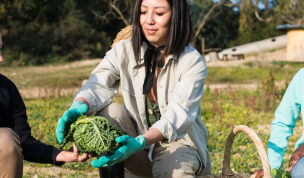Anxiety in the classroom

Anxiety is more than feeling stressed or worried.
It is an automatic response from our nervous system and can often feel like our emotions are out of control. That’s why phrases like “relax”, “cut it out” or “calm down” aren’t always going to help.
Subject matter expert and good friend of Life Ed, Dr Justin Coulson, sat down recently to share four simple ways teachers can manage anxiety in the classroom.
Do small group work first
When asking questions of the class, it’s not uncommon to see the same set of hands shoot up – the confident students. By working in small groups first, children experiencing anxiety have a chance to find their voice.
WHAT TO SAY: “I’d like you all to take 60 seconds to discuss their answers in groups of 2 or 3 before I ask for some volunteers to share with the class.”
Give a warning
When it’s time for participation, students experiencing anxiety would love warning. By providing this time, they have the opportunity to calm their thinking and prepare to engage.
WHAT TO SAY: “We’re going to have a class discussion about this in 5 minutes. I’d like you all to make some notes so when I call on, you are ready to respond.”
Approach new situations in steps
If you’re putting students into new situations, try and approach it in stages instead of all at once.
WHAT TO DO: Catch students experiencing anxiety (or who don’t respond well to change) before class or in the playground and share how much you are looking forward to this new activity, explain the detail and how you think they will enjoy it too.
Allow for questions
Allowing for questions, not only provides the opportunity for clarity but provides students with anxiety reassurance.
HOW TO DO IT: Instead of asking for questions in front of the class, give students time to come to your desk or ask them to raise their hand and go to them to answer their question one on one.
If a student gets stuck, move on easily
Pushing for an answer can lead to more anxiety. Try one of the responses below and help a student move past the emotion into learning.
WHAT TO SAY: “That’s ok. How about I move on to someone else and come back to you?” or “We can start that again now or later. What works best for you?”










